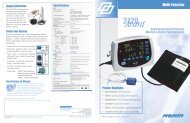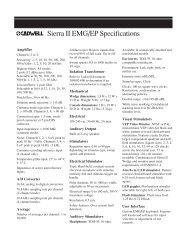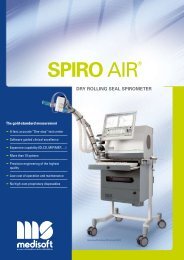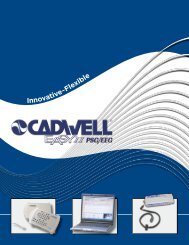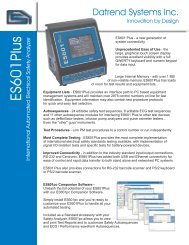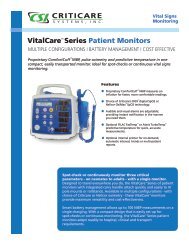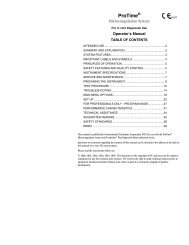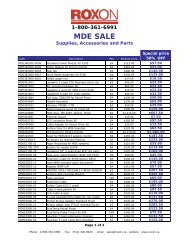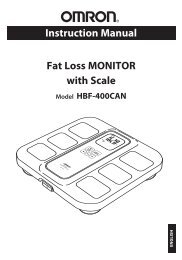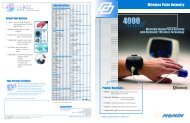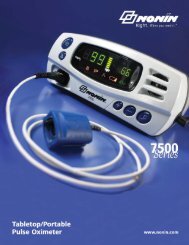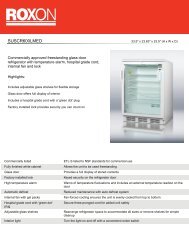Atria 6100 Operator's manual - Roxon
Atria 6100 Operator's manual - Roxon
Atria 6100 Operator's manual - Roxon
- No tags were found...
You also want an ePaper? Increase the reach of your titles
YUMPU automatically turns print PDFs into web optimized ePapers that Google loves.
AnnuallyTestingThe <strong>Atria</strong> performs a self-test at power up. No additional testing orcalibration is necessary.Check the Patient cableIf the patient cable appears damaged in any way (including nicks, cuts,bulging, or fraying), contact your local representative for replacement.• Visually inspect the cable for cracks, stress marks andbroken or bent pins.• Connect the patient cable to the ECG and attach each sensorlead to an electronic heart signal simulator. (If a simulator isnot available, a test subject may be used.)• Check the signal transmission through the cable by flexingthe cable and electrode lead wires and observing the ECGrhythm for irregular tracings.NOTE: If using a test subject, be sure not to disturb thesensor site since common baseline artifact will occur. Thisshould not be confused as a broken wire.Testing the batteryThe <strong>Atria</strong> automatically monitors battery status. No additional batterytests or calibration are required.If the battery does not retain a charge for more than 30 minutes ofoperation, Refer to “Battery” on pg. 11-4.!WARNINGFire or explosion. Never remove the battery pack and attempt to rechargeusing an external battery charger.AnnuallyA complete safety and component check must be performed annually by aqualified service technician.The testing must include a 1 mV calibration pulse test to verify the gainhardware is properly calibrated.Component ReplacementThe Battery and Patient Cable are the only user replaceable component onthe <strong>Atria</strong>.<strong>Atria</strong> Electrocardiograph Operating Instructions 11-3



